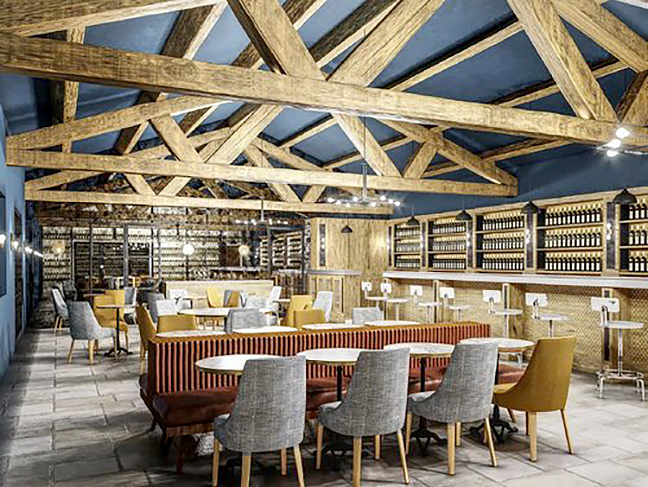Pale copper color; raspberry, strawberry, lemon, pink grapefruit, blood orange, ripe pear, geranium flowers on the nose and palate.

Dry; mild tannins and acidity. Impressively rich and round in the mouth. Blend of syrah, cinsault, grenache noir, rolle (aka vermentino). All the quality and sophistication you expect from a rosé from Provence, the cynosure of rosé. The winery notes emphasize the syrah and rolle notes. Fermented in temperature-controlled stainless steel, followed by relatively short aging on the lees. Rich if not complex effort. Delicious, will please diverse palates. 13% ABV
The grapes come from the Ultimate Provence vineyard, 100 acres around the town of La Garde Freinet, near the northern foot of Notre Dame des Anges chapel and 30 minutes from Saint-Tropez. The dash of rolle provides acidity, citrus notes, and aromatics. It is often called the “secret sauce” in Provence Rosé.
This pours from classically distinctive Provence bottle—Provence wineries compete with each other to offer dramatic, unique bottles. That is part of Provence charm, but the core attraction is what is in the bottles. Almost all Provence wines are rosé, so vintners in the region must be thrilled by the ascendance of rosé in recent years. Their offerings are the royalty of rosé. This effort is part of the glitterati court.

Ultimate Provence is part of the four estate Provence Rosé Group that also includes Chateau de Berne, Château Saint Roux, and Château des Bertrands. Urban Provence is a label of Ultimate Provence. Alexis Cornu is the winemaker. The website notes: “Set in wild countryside and bordered by a vast evergreen oak forest, the vineyard is characterized by shallow soil, laid on a waterproof subsoil sandstone slab. This excellent terroir is nourished with a natural compost of oak leaves and vine stalks. Ultimate Provence’s contemporary, luminous bottles are inspired by the vineyards light, bright spirit and offer it’s drinkers an extra surprise!”
The Provence region is located east of the Rhône River in southeastern France. Italy is its eastern border, the Mediterranean is the southern. It often is called the French Riviera. Marseille, Saint Tropez, Monaco, and Nice are principal towns. Wine has been made there for 2,600 years, since the Greeks founded the city of Marseille. The wine region, thus, reflects influence of Greeks, Romans, Gauls, Catalans, Savoyards, Spaniards and Italians. It is this millennia-deep knowledge that helps make Provence wines special.

The Côtes de Provence AOC covers more than 85 communes (small cities or townships; the name has nothing to do with Communist political ideology). Côtes is a French word with several meanings: in wine, often refers to a region which ties to two other meanings—coasts or shores and slopes or hillsides. In anatomy, côtes refers to ribs. If you think about it, it makes sense. Sort of.
The Côtes de Provence account for 75% of wine production in Provence and 80% of that production is rosé, making Provence a virtual synonym for rosé in French wine. Grenache and cinsaut are the major grapes used in the region, although carignan and syrah also are allowed, and then there is rolle (vermentino). By AOC rule, at least 20% of the wine must be made using the saignée (bled) method in which some of the juice is bled from the must (freshly pressed juice) in order to provide concentrated phenolics, color, and flavor of the red wine.

Ultimate Provence UP Côtes de Provence Rosé 2022 is delicious red fruit, round, superb Provence rosé. Tangy edge plays well with the juicy fruits. Richer, more body than the diaphanous efforts of some Provence purveyors. Widely available, well worth a sip. Works very nicely as an aperitif; with a charcuterie board. Pair with grilled fish; shellfish; sushi; salads and vegetarian fare; will work with lighter meats—pork, poultry; pasta with lighter white sauces. This is rich enough to be versatile with almost any fare save beef, and even then could work with lighter red meat efforts. Interestingly, it also will work with sweet and spicy food, including barbecue. Rosé always is versatile—it splits the difference between white and red wines. Cheese—burrata, feta, mozzarella, halloumi, humboldt fog, summer-milk comté, goat gouda, cambozola. $20-23

